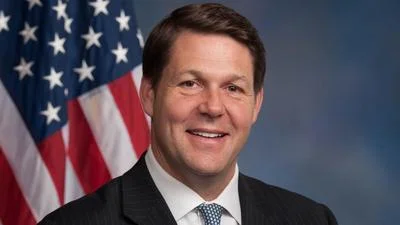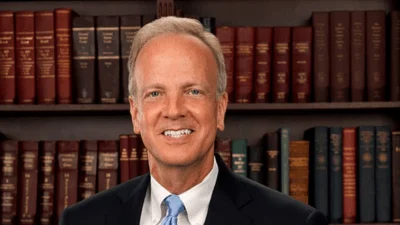Rep. Ro Khanna, Chairman of the Subcommittee on Environment, held a hearing to examine the urgent need for the federal government to adopt better wildfire preparation measures and discuss the human toll of wildfires that are becoming larger and more severe due to drought, global warming, and other climate stressors.
“The climate crisis and misguided land stewardship of the past have given rise to catastrophic burning across our Western forests,” said Chairman Khanna. “I have seen this problem first-hand in my district with fires that have blanketed Silicon Valley with unhealthy levels of smoke for weeks. To solve this problem, we need to listen to local and indigenous communities, not special interests that seek to dominate the conversation. I look forward to talking with the witnesses including the head of the U.S. Forest Service to reach consensus on the best strategy to prevent against these fires.”
The Subcommittee heard testimony from Randy Moore, Chief of the U.S. Forest Service; Carole King, celebrated singer-songwriter and land conservation advocate; Ali Meders-Knight, Mechoopda Tribal Member and Traditional Ecological Knowledge Practitioner; Dr. Michael Gollner, Associate Professor of Mechanical Engineering, University of California Berkley and Deb Faculty Fellow, Berkeley Fire Research Lab; Dr. Dominick A. DellaSala, Chief Scientist, Wild Heritage, Project of Earth Island Institute; and James Hubbard, former Under Secretary for Natural Resources and Environment, Department of Agriculture.
Members and witnesses discussed why careful forest management is crucial to mitigating the damage from increasingly severe and dangerous wildfires, which are being exacerbated by drought, global warming, and other climate stressors.
- Chairman Khanna explained: “Climate change is also worsening wildfires. Last month, the United Nations called for urgent action in a new report, warning that if we continue with business-as-usual climate pollution, we will have 57% more wildfires by the end of the century.” He continued, “Climate change, combined with the fuel build up, cause extreme wildfire disasters that can be deadly.”
- In response to a question from Rep. Krishnamoorthi, Ms. King said, “I just want people to really recognize that we are logging in our national forests at a rate equal to the emissions from burning coal, that logging needs to be part of the discussion.” She continued: “The other [issue] is the misuse of our federal funds going to subsidize—pay for—we are paying for the roads that go in, the logging, all the damage to our forests. We need to reroute that money to help people harden homes that cannot afford to do it, and to protect communities.”
- Mr. Moore explained: “People depend on the nation’s forests and grasslands for their social, economic, and personal well-being. National forests and grasslands are critical for climate resilience, providing benefits including carbon storage, habitat and connectivity for wildlife, and clean air and water.”
Members questioned witnesses about the challenges the U.S. Forest Service faces in maintaining the ecological health of forests and reducing combustible fuel, including a tight budget, competing priorities, and the influence of the commercial logging industry.
- In response to a question from Chairwoman Maloney, Ms. King said, the Forest Service “takes the most profitable trees, which are the big ones. And then they leave all the branches on the ground to dry out, which exacerbates fires.”
- In response to a question from Chairman Khanna, Dr. DellaSala explained: “The Forest Service has been in charge of a lot of this research. This would be like putting the coal industry in charge of climate change research. This would be like putting the tobacco industry in charge of lung cancer research.”
- In response to a question from Chairman Khanna about forest thinning practices, Dr. Gollner responded: “We’re primarily interested in removing, I believe as the Representative said earlier, the thatch and the smaller fuels on the ground. Those are the fuels we often call ‘ladder fuels,’ which then spread fires into the crowns and increase fire behavior. And it’s these smaller fuels that often drive fire behavior. And so, a great way to remove them is often prescribed burning.”
Members and witnesses highlighted how allowing Tribes and traditional ecological knowledge-holders to play a leading role in forest management, as well as increasing focus on adaptation in the wildland-urban interface, can improve wildfire suppression and resilience and protect cultural resources.
- Ms. Meders-Knight explained: “Over thousands of years, Tribes learned how to live in this place using fire and harvesting and cultivating resilience in plants, because plants are what make us resilient. We’ve learned that there is good fire, there is good smoke. Good fire and good smoke bring water in the form of rain, and sequester carbon in the soil, and make healthy plants that have been adapted to good fire for thousands of years.”
- In response to a question from Rep. Ocasio-Cortez about the benefits of indigenous controlled prescribed burns, Ms. Meders-Knight said: “We’re going to have carbon sequestration—carbon stored into the soil—we’re going to have healthy, fire-adapted plants, and we’re going to have a thriving ecosystem that has lots of biodiversity, which is natural selection, natural mortality that is chosen by the fire.”
- Dr. DellaSala stated: “Our primary focus should be helping existing communities to become fire safe. Out in forest wildlands, reintroducing fire safely should be a priority when it is not a threat to communities. If and where thinning occurs, it should be noncommercial, with large fire-resistant and mature trees protected from logging.”
- In response to a question from Chairman Khanna, Chief Moore committed to meet with stakeholders, experts, and advocates, including Indigenous communities, to discuss their concerns with Forest Service thinning practices.
Original source can be found here.









